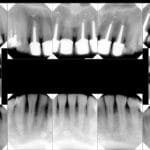This guide provides a detailed overview of Current Procedural Terminology (CPT) coding for incision and drainage (I&D) procedures, essential for accurate medical billing and reimbursement. Precise coding is paramount to avoid claim denials and ensure appropriate compensation for services rendered.
Understanding I&D CPT Codes
CPT codes 10060-10180 specifically address I&D procedures of the integumentary system. Choosing the correct code hinges on several key factors: complexity of the procedure, location of the lesion, and type of lesion. Deeper or more complex I&D procedures may necessitate using codes from other sections of the CPT manual. The American Academy of Professional Coders (AAPC) offers valuable resources and education regarding proper coding guidelines.
Key Factors Influencing Code Selection
-
Complexity: I&D procedures are categorized as simple or complex. Simple I&Ds typically involve a single incision of a superficial abscess, such as a carbuncle, hidradenitis, cyst, furuncle, or paronychia. Complex I&Ds involve multiple incisions, extensive exploration, or the placement of packing material within the wound.
-
Location: I&D procedures performed on the skin and subcutaneous tissue utilize codes from the 10060-10180 range. Procedures involving deeper structures, such as muscle or organs, require different CPT codes. This distinction between superficial and deep procedures greatly impacts code selection, potentially requiring the coder to consult sections of the CPT manual outside of the integumentary system.
-
Lesion Type: The nature of the drained fluid collection (abscess, hematoma, seroma, cyst, etc.) significantly influences code assignment. Each distinct type of lesion may have a unique set of corresponding codes.
Common I&D Procedures and Their Corresponding CPT Codes
This section details common I&D scenarios and the likely CPT code selection:
Abscess I&D
- CPT Code 10060: Incision and drainage of a simple or single abscess. This commonly involves a single incision left open to drain.
- CPT Code 10061: Incision and drainage of a complex or multiple abscess requiring packing or drains. The additional steps of packing or drain placement distinguish this code from 10060.
Hematoma/Seroma I&D
- CPT Code 10080: Incision and drainage of a hematoma. A hematoma is a localized collection of blood outside of blood vessels.
- CPT Code 10120: Incision and drainage of a seroma. A seroma is a collection of serum, the clear portion of blood, that can accumulate under the skin after an injury or surgery.
Cyst I&D
- CPT Code 10140: Incision and drainage of a cyst. This code is specific to sebaceous and epidermal cysts, as well as pilonidal cysts.
For information on maintaining healthy gums, see Interproximal Brushes.
Coding Pitfalls and Documentation Best Practices
Avoiding Common Coding Errors
- Needle Aspiration: Aspiration using a needle alone does not qualify for I&D coding. An incision must be made for I&D coding. Aspiration may be bundled into the Evaluation and Management (E/M) service.
- Insufficient Documentation: Meticulous documentation is crucial. Lack of specific details regarding the procedure performed, including location, size, and complexity, may result in downcoding and reduced reimbursement.
Documentation Essentials
Thorough documentation should include:
- Incision Details: Type, length, and depth of the incision.
- Drainage Method: Technique used (e.g., suction, irrigation, manual expression).
- Additional Procedures: Any probing, packing, or wound closure performed.
- Lesion Characteristics: Size, location, appearance, and other relevant features.
- Number of Lesions: Document if multiple lesions were treated and if separate incisions were made for each lesion.
Accurate documentation not only supports the chosen CPT code but also provides a clear record of the procedure, minimizing the risk of future disputes or audits.
Advanced Coding Considerations and Resources
While this guide covers common I&D scenarios, more complex cases may present. Such scenarios could involve multiple locations, deeper anatomical structures, significant debridement, or unusual lesion types. For these complex cases, consulting the complete CPT manual and seeking guidance from certified coding professionals is highly recommended.
Ongoing research in wound care and infection management suggests that coding practices may evolve. If you would like to learn more, see our page on interintra. Staying informed about updates and changes to CPT coding guidelines is crucial for maintaining accurate billing practices. Reliable resources include the AAPC, AMA, and other authoritative coding organizations. Individual payer policies can vary, emphasizing the importance of verifying specific requirements before submitting claims.
This comprehensive guide seeks to equip healthcare professionals with the knowledge and tools necessary for accurate I&D CPT coding. While the information provided offers a strong foundation, ongoing learning and adaptation to evolving coding standards are essential for sustained success in medical billing.
- Unveiling the Enigma: Mansoureh Khojasteh Bagherzadeh’s Public Appearances & Private Life in Iran - July 18, 2025
- Unveiling the Mystery: Mansoureh Khojasteh Bagherzadeh’s Husband: A Rare Glimpse into a Private Life - July 18, 2025
- Unveiling Masoud Khamenei’s Mother: Power, Influence, and Iran’s Future - July 18, 2025















